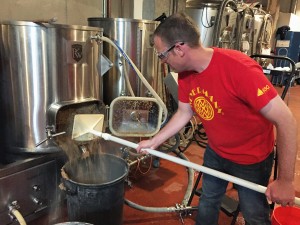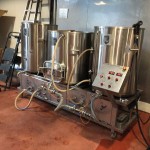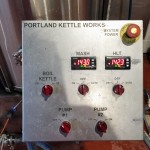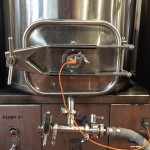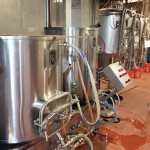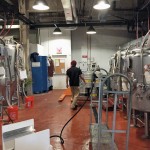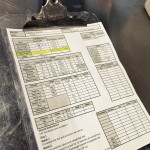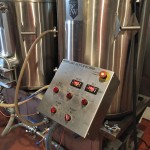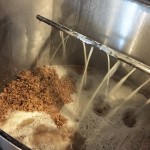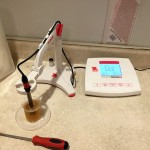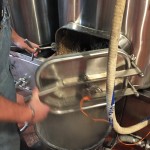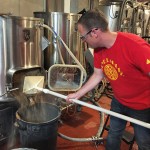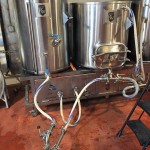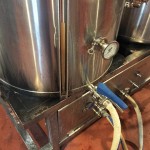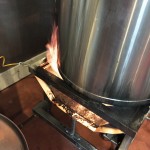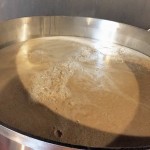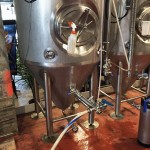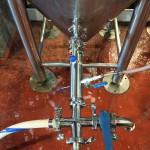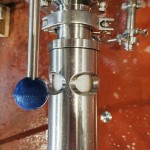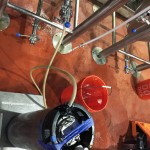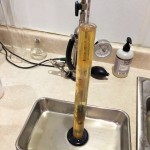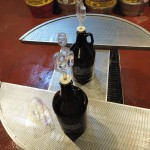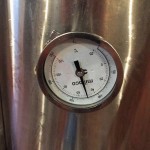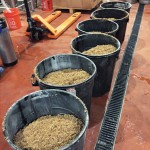Opening a commercial brewery is the ultimate fantasy for many homebrewers.There is something incredibly thrilling (and cool) about taking a beer that you have conceptualized and crafted and bringing it over to the commercial beer world. This is a big part of the reasoning why most homebrewers jump at the opportunity to have one of their recipes scaled up and brewed on a commercial scale.
This is precisely the spot I found myself in a couple weeks ago when I had the opportunity to brew my Oast House Saison at Yonker’s Brewing Company. All of this was the result of winning the Brewer’s Choice award at the Westchester Farmhouse Ale Competition — not a bad prize!
One interesting thing I have realized over the course of this experience is how non-brewers perceive brewers and the work they do; recipe formulation is viewed as alchemy and something to protect. But I’ve always taken the mindset that recipe is fractionally important compared to the technical skills of the brewer. I think it is somewhat absurd that I have been asked multiple times if I am being monetarily compensated for this recipe being brewed at Yonkers. Honestly, the value in seeing firsthand how a commercial brewery operates is far more valuable than the recipe. The marketing and experiential value has been enormous for me — especially as I consider perhaps one day opening my own brewery.
This was my third time taking a personal homebrew recipe and scaling it up to a commercial batch. This is always a challenge as commercial brewers may not have the same stock of ingredients used in the original recipe. Being malleable is critical for a successful ProAm collaboration. Remain humble and realize that this is a profession for those you’re working with and that there are economic considerations that simply don’t exist in homebrewing. Try to stay true to your vision, but allow yourself to be creative in achieving the same end despite the means. It is important to play the role of the humble homebrewer — these types of collaborations are fun and should be positive for all parties involved. I think we achieved this on all ends of this collaboration.
If the case of my beer, I used a complex mixed-culture of saccharomyces, brettanomyces, and lactobacillus to ferment my beer. This fermentation was critical in achieving the appropriate level of acid and funk in my complete beer, but something that could not be achieved at Yonkers Brewing without running the risk of contaminating their brewery. The suggestion of their brewer was to kettle sour half of the batch and then blend it back with the other half that was cleanly fermented with saison yeast. The idea is that the kettle soured half would bring the tartness exhibited by my homebrew while keeping any souring organisms to the hot side of the brewery where contamination would not be a risk. Additionally, we tweaked the recipe slightly, adding approximately 10% corn sugar to encourage the high level of attenuation exhibited by my homebrew and attributed to the atypical fermentation.
Right now the beer is finishing fermentation and conditioning. Stay tuned. I’ll post details soon about when and where the commercial version of Oast House Saison can be enjoyed.
Brew Day Play-By-Play
- Three-vessel brewhouse fabricated by Portland Kettle Works. Each brew yields 3.5 barrels of wort. Two batches are brewed to fill each 7- barrel fermenter. The brewhouse is a combination RIMS / direct fire system.
- Control panel with set points for the mash tun and hot liquor tank.
- Sensor on mash tun which controls the burner for the recirculating mash.
- Three-vessel brewhouse fabricated by Portland Kettle Works.
- The fermentation cellar.
- Brewsheet
- Heating strike water to mash in.
- Recirculating the mash during its 60-minute rest.
- Checking our mash pH.
- Manway door on the mash tun.
- Mucking out the mash tun.
- Lauter set-up to transfer wort from the mash tun to boil kettle.
- Transferring wort from the mash tun to boil kettle.
- Direct fired boil kettle — not that different than what most homebrewers do.
- First batch coming up to a boil.
- The first 3.5 barrels of wort on its way to the fermenter.
- Rig used to transfer wort from the heat exchanger to the fermenter.
- Inline oxygenation as the wort is transferred to the fermenter.
- Pushing yeast into the fermenter via a pressurized corny keg.
- Checking our wort’s specific gravity.
- Lacto cultures used to sour the second batch.
- Keeping the kettle in the range of 110-120 for lactic souring.
- The day’s spent grain destined for some hungry cow’s belly.

